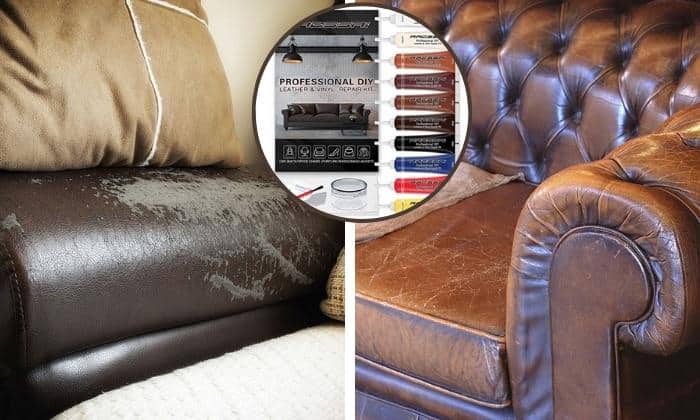How to Repair a Peeling Faux Leather Couch

=====================================================
Hey there, folks. Are you dealing with a peeling faux leather couch and wondering how to repair a peeling faux leather couch? Faux leather, also known as vegan leather or synthetic leather, can be a bit more delicate than the real thing. However, with the right techniques and materials, you can easily fix a peeling faux leather couch and have it looking good as new in no time.
Assessing the Damage
Before you start repairing your peeling faux leather couch, it’s essential to assess the damage. Take a closer look at the affected area and determine the extent of the peeling. Check if the faux leather is just peeling off or if it’s also cracked or torn. This will help you decide the best course of action for your repair.
Checking for Underlying Issues
In some cases, peeling faux leather can be a sign of an underlying issue, such as a problem with the couch’s frame or a water stain. If you notice that the peeling is only occurring in a specific area, it may indicate that there’s an issue with the couch’s construction or that it’s been exposed to water.
If you suspect that there’s an underlying issue, it’s crucial to address it before you start repairing the faux leather. For example, if the couch is water-damaged, you’ll need to dry it out completely before attempting any repairs.
Preparing Your Materials
Once you’ve assessed the damage and addressed any underlying issues, it’s time to gather your materials. Here are some of the things you’ll need to repair a peeling faux leather couch:
- Faux leather patching kit
- Faux leather adhesive
- Scissors
- Craft knife or utility knife
- Ruler or cutting mat
- Pencil or marker
- Cleaning solution (such as soap and water or a leather cleaner)
- Soft cloth or brush
Choosing the Right Faux Leather Patching Kit
When it comes to choosing a faux leather patching kit, it’s essential to select one that matches the color and texture of your couch as closely as possible. You can find faux leather patching kits at most craft stores or online retailers. Make sure to read reviews and follow the manufacturer’s instructions for the best results.
Cleaning the Affected Area
Before you start repairing the peeling faux leather, it’s essential to clean the affected area thoroughly. Use a soft cloth or brush to gently wipe away any dirt, dust, or debris that may be accumulating on the surface.
Removing Old Adhesive
If the peeling faux leather has left behind a sticky residue, you’ll need to remove it before applying new adhesive. Use a cleaning solution such as soap and water or a leather cleaner to gently scrub away the old adhesive. Be careful not to damage the surrounding faux leather.
Applying the Faux Leather Patch
Now that the affected area is clean and free of old adhesive, it’s time to apply the faux leather patch. Use scissors or a craft knife to cut a patch of faux leather that’s slightly larger than the peeling area.
Applying the Adhesive
Use a small amount of faux leather adhesive to attach the patch to the affected area. Make sure to follow the manufacturer’s instructions for application and drying times.
Smoothing Out the Patch
Use a soft cloth or brush to gently smooth out the patch and ensure it’s securely attached. Make sure there are no air bubbles or wrinkles in the patch.
Repeating the Process
If the peeling faux leather is extensive, you may need to repeat the process of applying patches and adhesive to multiple areas. Make sure to allow each patch to dry completely before applying additional patches.
Tips for a Smooth Finish
To achieve a smooth finish, make sure to apply even pressure to the patch and surrounding area. Use a ruler or cutting mat to ensure the patch is straight and evenly aligned.
Additional Tips for Repairing a Peeling Faux Leather Couch
Here are some additional tips for repairing a peeling faux leather couch:
- How to repair a peeling faux leather couch: Use a faux leather patching kit that matches the color and texture of your couch.
- How to repair a peeling faux leather couch: Apply even pressure to the patch and surrounding area to achieve a smooth finish.
- How to repair a peeling faux leather couch: Allow each patch to dry completely before applying additional patches.
- How to repair a peeling faux leather couch: Use a soft cloth or brush to gently smooth out the patch and ensure it’s securely attached.
Preventing Future Peeling
To prevent future peeling, it’s essential to take good care of your faux leather couch. Here are some tips for maintaining your faux leather couch:
Cleaning Your Faux Leather Couch
Use a soft cloth or brush to gently clean your faux leather couch on a regular basis. Avoid using harsh chemicals or abrasive materials that can damage the surface.
Conditioning Your Faux Leather Couch
Use a faux leather conditioner to keep the surface soft and supple. Follow the manufacturer’s instructions for application and frequency.
Protecting Your Faux Leather Couch
Use a faux leather protector to shield the surface from spills and stains. Follow the manufacturer’s instructions for application and frequency.
Conclusion
Repairing a peeling faux leather couch can be a bit of a challenge, but with the right techniques and materials, you can easily fix it and have it looking good as new. How to repair a peeling faux leather couch is a simple process that requires patience, attention to detail, and the right materials. By following these steps and tips, you can revive your peeling faux leather couch and enjoy it for years to come.